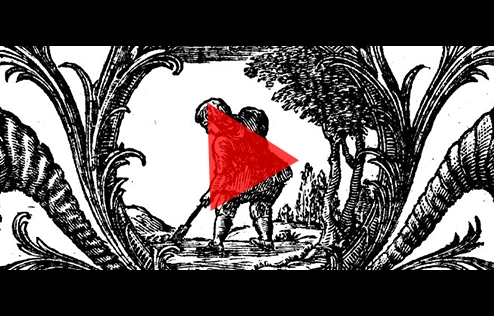Moses
At the inmost level, the story of Moses -- like all of the Bible -- is about the Lord and his spiritual development during his human life as Jesus. Moses's role represents establishing forms of worship and to make the people obedient. As such, his primary representation is "the Law of God," the rules God gave the people of Israel to follow in order to represent spiritual things. This can be interpreted narrowly as the Ten Commandments, more broadly as the books of Moses, or most broadly as the entire Bible. Fittingly, his spiritual meaning is complex and important, and evolves throughout the course of his life. To understand it, it helps to understand the meaning of the events in which he was involved. At a more basic level, Moses's story deals with the establishment of the third church to serve as a container of knowledge of the Lord. The first such church -- the Most Ancient Church, represented by Adam and centered on love of the Lord -- had fallen prey to human pride and was destroyed. The second -- the Ancient Church, represented by Noah and the generations that followed him -- was centered on love of the neighbor, wisdom from the Lord and knowledge of the correspondences between natural and spiritual things. It fell prey to the pride of intelligence, however -- represented by the Tower of Babel -- and at the time of Moses was in scattered pockets that were sliding into idolatry. On an external level, of course, Moses led the people of Israel out of Egypt through 40 years in the wilderness to the border of the homeland God had promised them. Along the way, he established and codified their religious system, and oversaw the creation of its most holy objects. Those rules and the forms of worship they created were given as containers for deeper ideas about the Lord, deeper truth, and at some points -- especially when he was first leading his people away from Egypt, a time before the rules had been written down -- Moses takes on the deeper representation of Divine Truth itself, truth from the Lord. At other times -- especially after Mount Sinai -- he has a less exalted meaning, representing the people of Israel themselves due to his position as their leader. Through Moses the Lord established a third church, one more external than its predecessors but one that could preserve knowledge of the Lord and could, through worship that represented spiritual things, make it possible for the Bible to be written and passed to future generations.
287 - The Lampstand
Napsal(a) Jonathan S. Rose
Title: The Lampstand
Topic: Salvation
Summary: The lampstand in the tabernacle is an image of a permanent capacity in our minds to see God.
Use the reference links below to follow along in the Bible as you watch.
References:
Exodus 25:31-40; 26:35; 27:20-21; 35:10-14; 37:17-22; 39:37; 40:3-4, 24-25
Leviticus 24:1-4
Numbers 8:1-4
1 Kings 7:48-49
2 Kings 4:9-11
2 Chronicles 4:6-8, 19-22
Psalms 119:104-105
2 Chronicles 13:11
Zechariah 4
Matthew 5:8, 14-16; 25:1-12
Mark 4:21-23
Luke 11:33-36
Ephesians 1:17-18
Revelation 1:12-174, 20; 2:1-5; 11:4
Matthew 18:10
Acts of the Apostles 2:25







